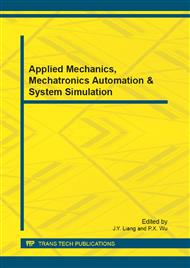p.1321
p.1327
p.1333
p.1338
p.1345
p.1351
p.1357
p.1361
p.1367
Finding Out Biological Terms from Texts with CRFs for Reinforcement Learning
Abstract:
The rapid growth of biological texts promotes the study of text mining which focuses on mining biological knowledge in various unstructured documents. Meanwhile, most biological text mining efforts are based on identifying biological terms such as gene and protein names. Therefore, how to identify biological terms effectively from text has become one of the important problems in bioinformatics. Conditional random fields (CRFs), an important machine learning algorithm, are graphical models for modeling the probability of labels given the observations. They have traditionally been trained with using a set of observation and label pairs. Here we use CRFs in a class of temporal learning algorithms, reinforcement learning. Consequently the labels are actions that update the environment and affect the next observation. As a result, from the view of reinforcement learning, CRFs provide a way to model joint actions in a decentralized Markov decision process, which define how agents can communicate with each other to choose the optimal joint action. We use GENIA corpus to carry on training and testing the proposed approach. The result showed the system could find out biological terms from texts effectively. We get average precision rate=90.8%, average recall rate=90.6%, and average F1 rate=90.6% on six classes of biological terms. The results are pretty better than many other biological named entity recognition systems.
Info:
Periodical:
Pages:
1345-1350
Citation:
Online since:
September 2012
Authors:
Price:
Сopyright:
© 2012 Trans Tech Publications Ltd. All Rights Reserved
Share:
Citation:


